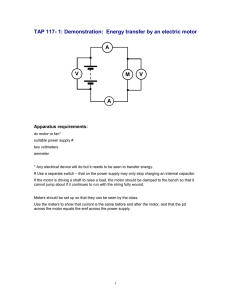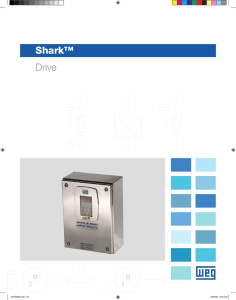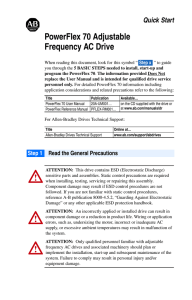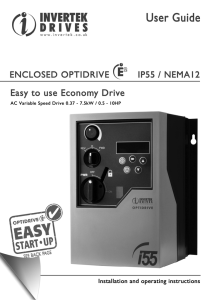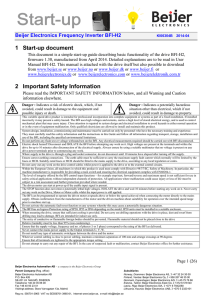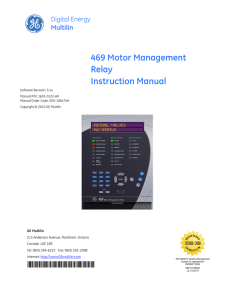AC MOTOR SPEED CONTROLLER VVCA TENDER SPECIFICATIONS
advertisement
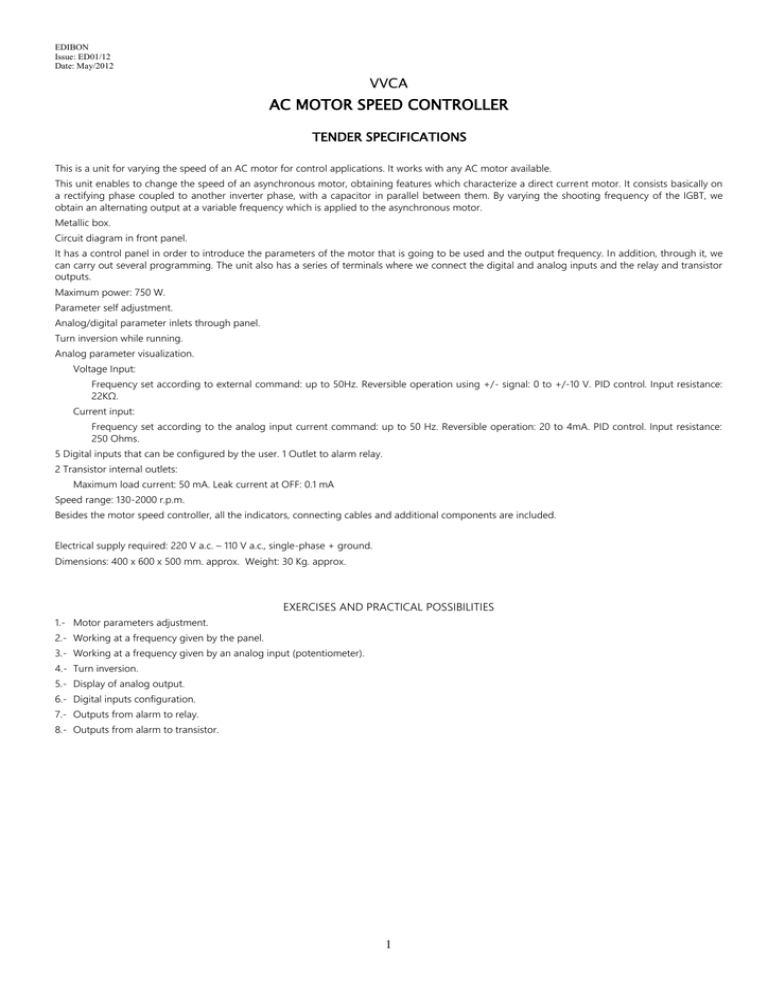
EDIBON Issue: ED01/12 Date: May/2012 VVCA AC MOTOR SPEED CONTROLLER TENDER SPECIFICATIONS This is a unit for varying the speed of an AC motor for control applications. It works with any AC motor available. This unit enables to change the speed of an asynchronous motor, obtaining features which characterize a direct current motor. It consists basically on a rectifying phase coupled to another inverter phase, with a capacitor in parallel between them. By varying the shooting frequency of the IGBT, we obtain an alternating output at a variable frequency which is applied to the asynchronous motor. Metallic box. Circuit diagram in front panel. It has a control panel in order to introduce the parameters of the motor that is going to be used and the output frequency. In addition, through it, we can carry out several programming. The unit also has a series of terminals where we connect the digital and analog inputs and the relay and transistor outputs. Maximum power: 750 W. Parameter self adjustment. Analog/digital parameter inlets through panel. Turn inversion while running. Analog parameter visualization. Voltage Input: Frequency set according to external command: up to 50Hz. Reversible operation using +/- signal: 0 to +/-10 V. PID control. Input resistance: 22KΩ. Current input: Frequency set according to the analog input current command: up to 50 Hz. Reversible operation: 20 to 4mA. PID control. Input resistance: 250 Ohms. 5 Digital inputs that can be configured by the user. 1 Outlet to alarm relay. 2 Transistor internal outlets: Maximum load current: 50 mA. Leak current at OFF: 0.1 mA Speed range: 130-2000 r.p.m. Besides the motor speed controller, all the indicators, connecting cables and additional components are included. Electrical supply required: 220 V a.c. – 110 V a.c., single-phase + ground. Dimensions: 400 x 600 x 500 mm. approx. Weight: 30 Kg. approx. EXERCISES AND PRACTICAL POSSIBILITIES 1.- Motor parameters adjustment. 2.- Working at a frequency given by the panel. 3.- Working at a frequency given by an analog input (potentiometer). 4.- Turn inversion. 5.- Display of analog output. 6.- Digital inputs configuration. 7.- Outputs from alarm to relay. 8.- Outputs from alarm to transistor. 1



